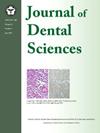Artificial intelligence-assisted enhancement of diagnostic accuracy and efficiency in detecting cervical lymph node metastases in oral squamous cell carcinoma
IF 3.1
3区 医学
Q1 DENTISTRY, ORAL SURGERY & MEDICINE
引用次数: 0
Abstract
Background/purpose
Cervical lymph node metastasis represents a critical prognostic factor in oral squamous cell carcinoma (SCC); however, early-stage or subtle metastases often pose diagnostic challenges under conventional microscopy. Recent advancements in artificial intelligence (AI) offer promising solutions to enhance diagnostic accuracy and efficiency. This study aimed to evaluate the extent to which AI-assisted tools can improve diagnostic performance and efficiency in the detection of cervical lymph node metastases.
Materials and methods
Sixty-six hematoxylin-eosin-stained slides containing 621 lymph nodes from oral SCC cases were digitized. Four participants (two oral pathologists, one postgraduate year (PGY) resident, one fourth-year dental student) reviewed slides with and without the AI-assistant tool. Diagnostic accuracy and interpretation time were compared.
Results
AI assistance significantly improved diagnostic accuracy and efficiency across different participants. False positives and false negatives decreased notably, especially for junior participants. Review time was also significantly shortened for negative and macrometastatic slides (P < 0.0001 and P < 0.05, respectively), with the greatest benefit seen among less-experienced participants.
Conclusion
The AI-assisted tool improved diagnostic accuracy and efficiency in detecting cervical lymph node metastases in oral SCC. It may serve as a preliminary screening tool and a valuable educational aid for training junior pathologists, underscoring its potential for broader application in digital pathology.
人工智能辅助提高口腔鳞状细胞癌颈部淋巴结转移的诊断准确性和效率
背景/目的宫颈淋巴结转移是口腔鳞状细胞癌(SCC)的一个关键预后因素;然而,在常规显微镜下,早期或微妙的转移经常带来诊断挑战。人工智能(AI)的最新进展为提高诊断准确性和效率提供了有前途的解决方案。本研究旨在评估人工智能辅助工具在检测颈部淋巴结转移方面提高诊断性能和效率的程度。材料与方法对口腔鳞状细胞癌621例淋巴结的66张苏木精-伊红染色切片进行数字化处理。四名参与者(两名口腔病理学家,一名研究生住院医师,一名四年级牙科学生)使用和不使用人工智能辅助工具检查了幻灯片。比较诊断准确率和判读时间。结果辅助诊断显著提高了诊断的准确性和效率。假阳性和假阴性显著减少,尤其是对初级参与者。阴性和大转移性玻片的复查时间也显著缩短(P <;分别为0.0001和P <; 0.05),经验不足的参与者获益最大。结论人工智能辅助工具提高了口腔鳞状细胞癌颈部淋巴结转移的诊断准确性和效率。它可以作为初步筛选工具和培训初级病理学家的宝贵教育援助,强调其在数字病理学中的广泛应用潜力。
本文章由计算机程序翻译,如有差异,请以英文原文为准。
求助全文
约1分钟内获得全文
求助全文
来源期刊

Journal of Dental Sciences
医学-牙科与口腔外科
CiteScore
5.10
自引率
14.30%
发文量
348
审稿时长
6 days
期刊介绍:
he Journal of Dental Sciences (JDS), published quarterly, is the official and open access publication of the Association for Dental Sciences of the Republic of China (ADS-ROC). The precedent journal of the JDS is the Chinese Dental Journal (CDJ) which had already been covered by MEDLINE in 1988. As the CDJ continued to prove its importance in the region, the ADS-ROC decided to move to the international community by publishing an English journal. Hence, the birth of the JDS in 2006. The JDS is indexed in the SCI Expanded since 2008. It is also indexed in Scopus, and EMCare, ScienceDirect, SIIC Data Bases.
The topics covered by the JDS include all fields of basic and clinical dentistry. Some manuscripts focusing on the study of certain endemic diseases such as dental caries and periodontal diseases in particular regions of any country as well as oral pre-cancers, oral cancers, and oral submucous fibrosis related to betel nut chewing habit are also considered for publication. Besides, the JDS also publishes articles about the efficacy of a new treatment modality on oral verrucous hyperplasia or early oral squamous cell carcinoma.
 求助内容:
求助内容: 应助结果提醒方式:
应助结果提醒方式:


